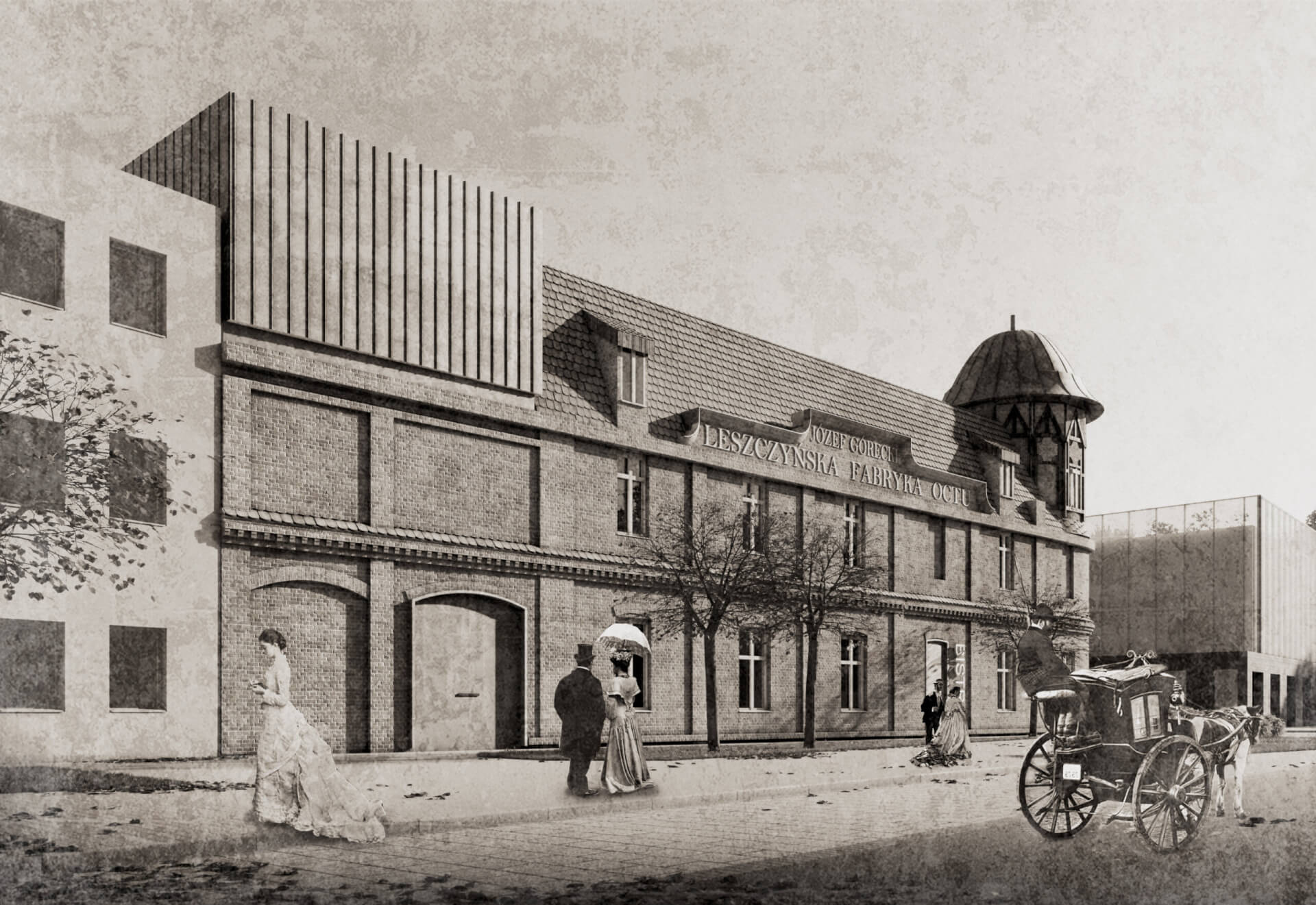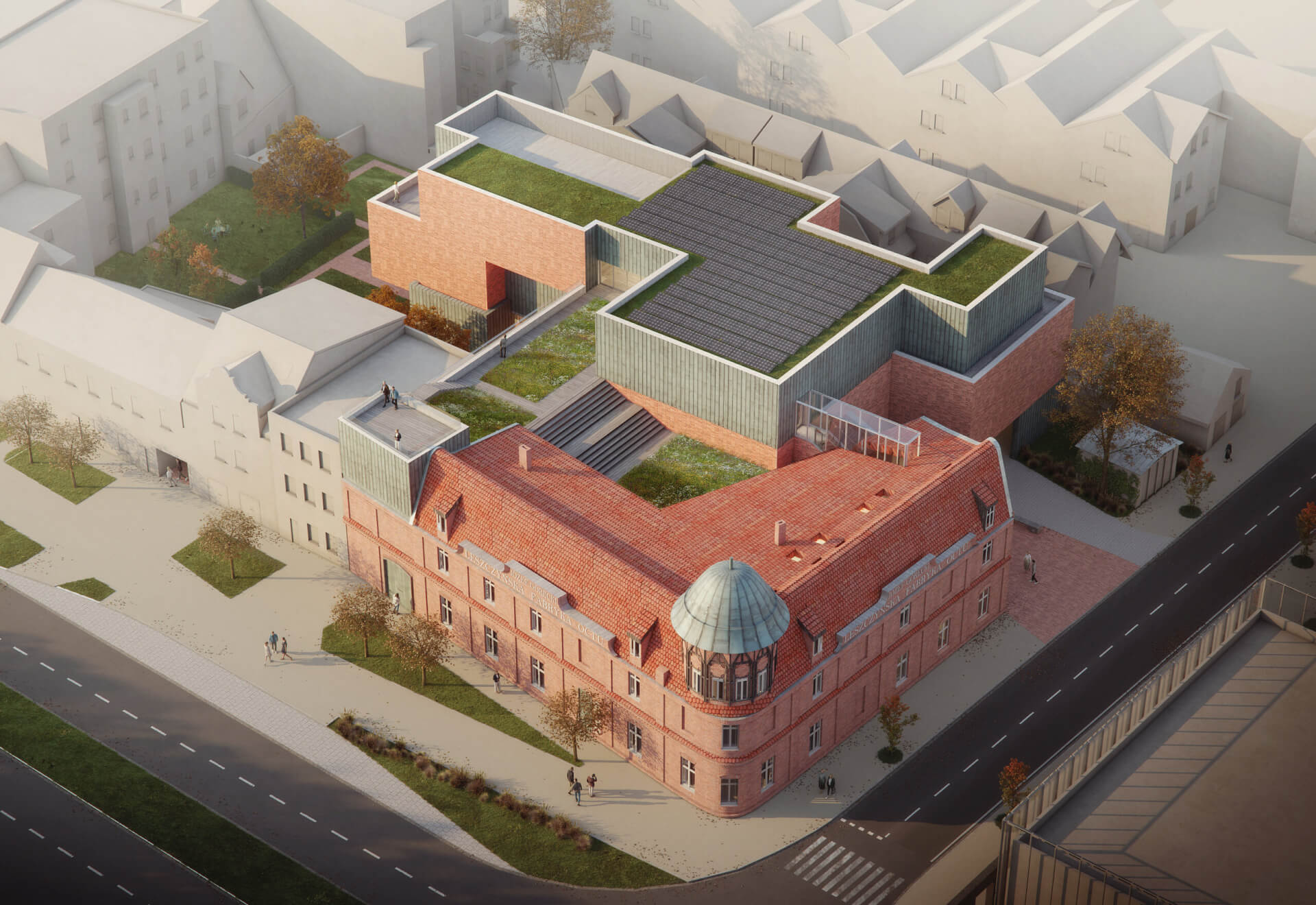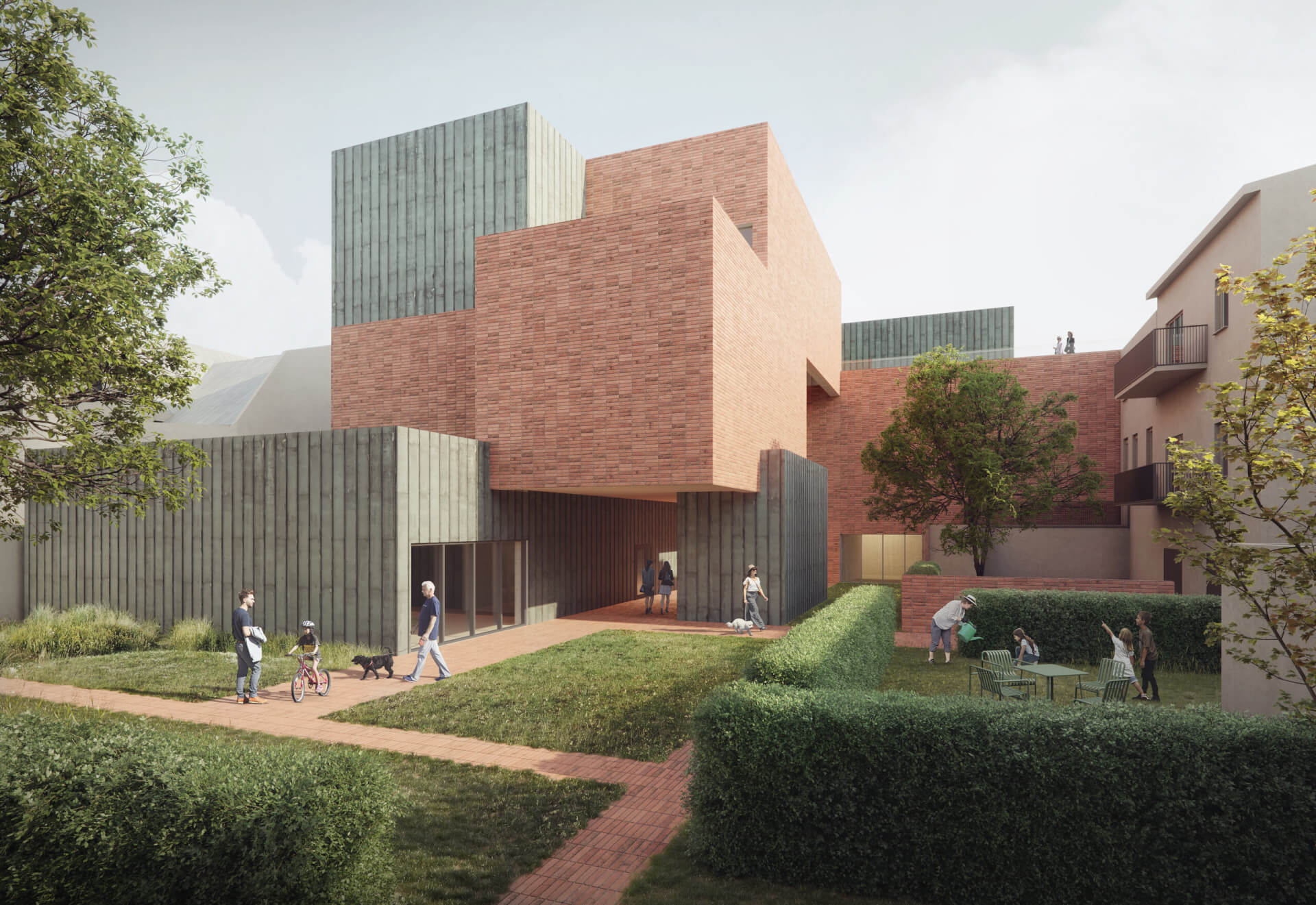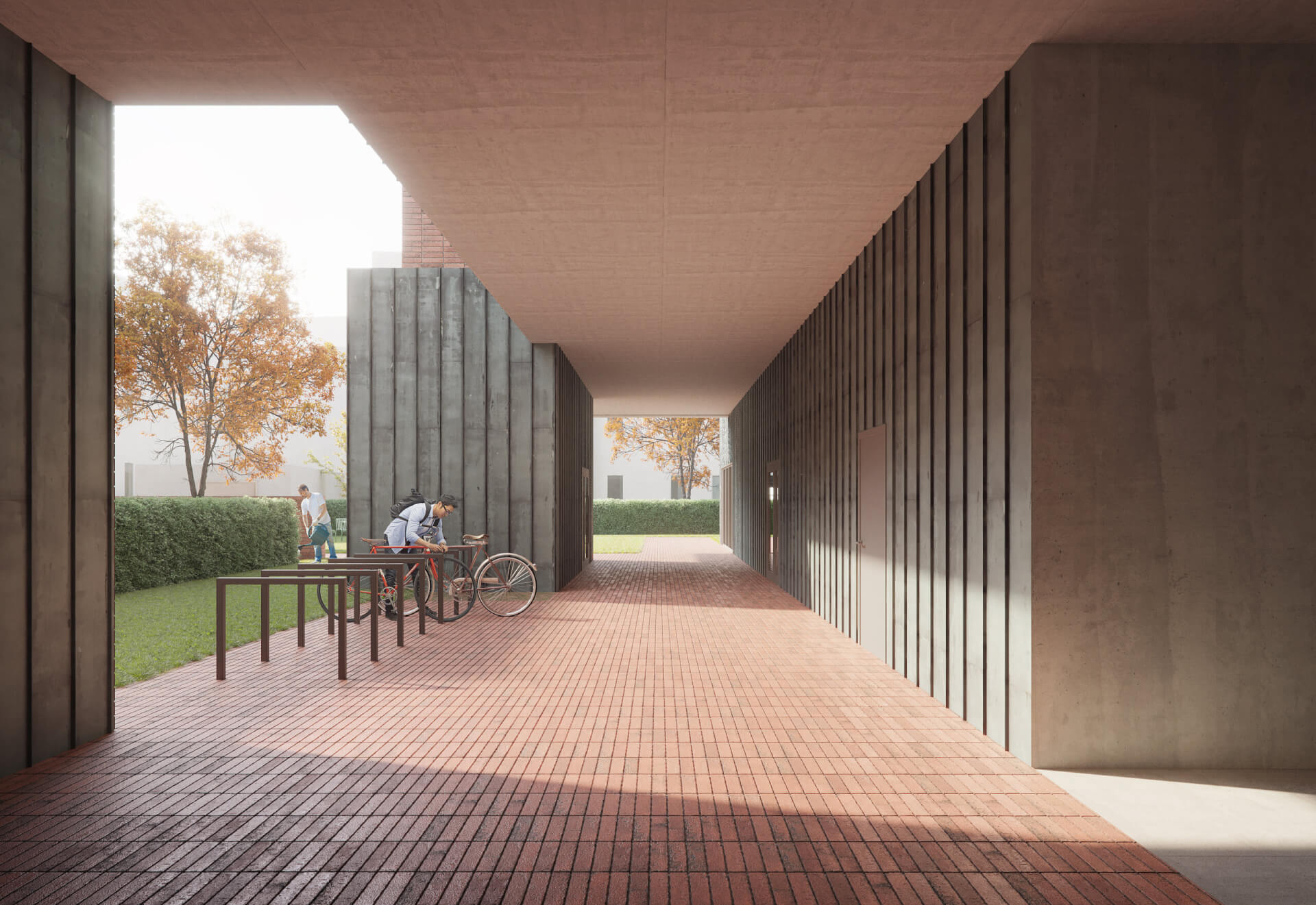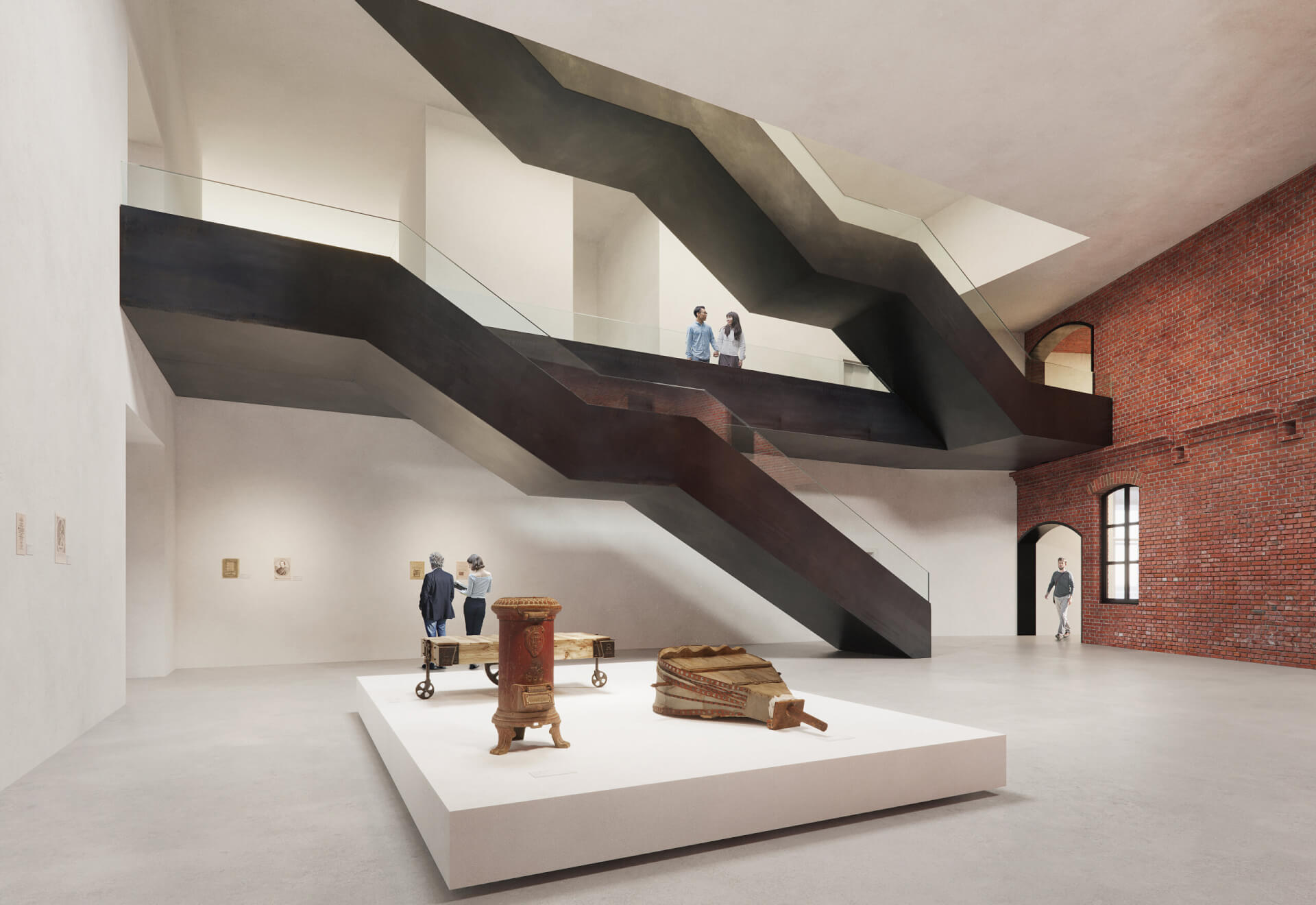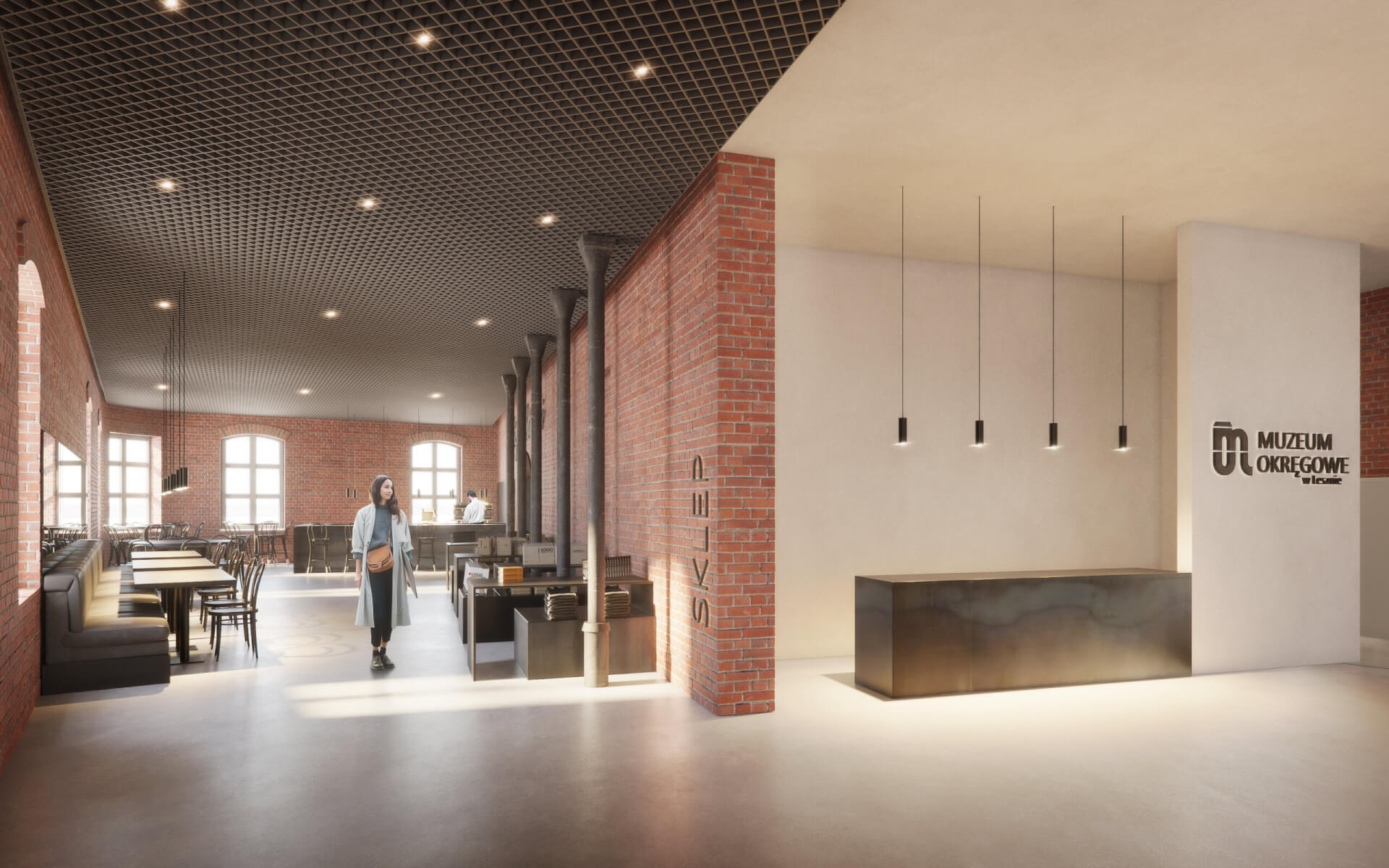museum
The new headquarters of the District Museum in Leszno was designed as a mouseion – from the Greek “temple of the muses,” and also “a scientific center”. Contemporary museums have evolved towards social openness and, in addition to their mission of preserving collections and conducting scientific research, have become highly accessible centers of culture, reaching out to their audiences and promoting their heritage in an accessible, attractive, and sometimes even spectacular way. In museums, there is little or no sacred element and contemporary profane often dominates, supported by new muses such as film, 3D animations, and artificial intelligence. There are already exhibitions where you can talk to historical figures or artists. At the Salvador Dali Museum in Saint Petersburg, Florida, visitors can chat with the artist and take selfies with him thanks to deep fake/AI technology! This position attracts like a magnet.
Whether we like it or not, consumerism is knocking at the doors of museums, paradoxically becoming their chance because, used creatively, it can transform into an extremely effective tool supporting the educational activities of institutions.
Urban space game. The location of the new Leszno mouseion seems perfect as it is located in the historical fabric of the city. Its greatest asset is the preserved building of the old vinegar factory, which allows for an architectural story about the contrast between the old and the new, seeking spatial synergies, surprising connections, harmonious sculptural marriages, delicate material links, and a coherent, respectful environment.
The incorporation of the building into the urban puzzle of a small quarter was undoubtedly the essence of the design task. Coping with formal limitations, such as screening, sun exposure, or distances from boundaries, in combination with the need to implement the museum’s functional program, resulted in a rather diverse block layout. What initially might have seemed like a disadvantage of the assumption became, in fact, the leitmotif of the concept.
New spaces for Leszno collections are a collage of rectangular blocks fitted into an urban courtyard, inserted, extended, or positioned as if detached from the new development, as in the case of a cube dialoguing with the corner tower of the former vinegar factory. This cube, covered with weathered copper, is a spatial signal announcing the changes that have taken place within the quarter. It is a clear message sent to passersby on Jan Paweł II Avenue, and for museum visitors, a viewing point. Moreover, the new museum building stands on terraces – as a result of fragmentation of the form, there are plenty of them. One of the most important is the one connecting the roof of the former vinegar factory with the new building. This connection was achieved by lowering the ceiling above the main exhibition space, which turned the terrace with a meadow and wooden stairs – a solarium – into a green courtyard of the tenement house. Thanks to this solution, the original shape of the vinegar factory building, along with its unusual historical roof structure covered with carp scales, will always remain legible for those walking on the roof, and will also be clearly outlined from a bird’s eye view or on geodetic maps.
The main entrance is located on the quieter Bolesława Chrobrego street, where it was possible to create a forecourt. This small, urban square allows the unusual XIX-century factory to be highlighted, showcasing its gable wall, and emphasizes the presence of a modern expansion, which is both a promise and a representation of the progressive and developing Leszno museum. The fact that the line of buildings in the historic quarter is “broken” in this area gives the place the appropriate status, and passersby can see the object from a wider perspective. This urbanistic maneuver, this “breath,” encourages people to step off the narrow sidewalk and into the museum, but not only into the interior…
The negative space of the square is also an emanation of openness and synergy that will be generated by the new building. Underneath the suspended structures, a dynamic passage was created, a kind of gateway that initiates a story about neighboring courtyards, shared gardens, mutual respect, and co-creation of social space. This is a very important concept, in which the new construction “bites into” the previously empty space. And although it was undeveloped, even degraded, the entering volume must seek spatial compromises to create new, attractive frames, corners, openings, or gardens. Hence, the concept of a modern museum breaks down the boundary walls of the plots, replacing them with hedges. And this is just the first, soft, step… After consultations with the community, perhaps the divisions and barriers will disappear forever. And the hedges will be transformed into green labyrinths where children from nearby tenements will play? Such a target scenario can and should be creatively supported by future educational and workshop activities of the institution.
Function, form, material. The proposal for the new headquarters of the Regional Museum in Leszno seeks to utilize every spatial meander, every option, to weave a smoothly functioning museum machine. On the ground floor, a pedestrian passage paved with brick leads to shared courtyards and separates the access zone to exhibitions from the technical part of the building, which houses a parking lot for 10 cars and a conservation department with a separate entrance, a freight elevator (connecting all levels of the museum, including the ethnographic-ecological exhibition terrace), an unloading area, and a garage for a small delivery vehicle. This functional block is located on the sharp northern boundary of the plot, as the neighboring buildings have their internal courtyards and windows only on the first floor. This path is designed for pedestrians and visitors, but it also serves as a technical passageway for servicing the courtyard or maneuvering a larger delivery vehicle if necessary. The main vehicular access is provided through the public parking lot. This zone also includes bicycle racks and an additional storage room for gardening equipment or a snowplow, which was not included in the program.
A time travel visit to the museum begins with immersing oneself in the history of the place, both literally and figuratively. The main entrance is located in the 19th-century octagonal building, allowing for a continuation of the story of space composition through old and new elements. The age-old brick contrasts with the modern industrial flooring in a whitish shade of concrete. Arched openings and windows clash with the simplicity of wall planes covered in cement-lime plaster, whose texture gives the interior a warm character. Restored iron columns stand out against the modern ceiling. The principle of combining through contrast, or even separation, leaves no doubt in the minds of building users as to where the boundary between the 19th and 21st centuries lies. There are simply no imitations in these spaces. The principle of honesty prevails…
The museum reception is centrally located, allowing for the handling of a large entrance area. Behind it are the toilets, social and cleaning facilities, and a cloakroom for visitors. The lobby area is directly connected to the exhibition area and the café combined with the museum shop. The arrangement of the relaxation, coffee, and book space fully utilizes the advantages of the historic fabric, leaving the unrendered brickwork exposed, showcasing all its scars and imperfections. An opening in the wall, which once served as the building’s facade, was lowered to further highlight the only surviving inscription: Józef Górecki. The bistro has a separate entrance from Jana Pawła II Avenue (shared with administration staff) and can be completely separated from the visitor area. The café potentially can also operate independently outside of the institution’s opening hours. Similarly, the multimedia room, equipped with a small, trapezoidal foyer, can operate independently of all exhibitions if necessary. The temporary exhibition gallery was planned with access to the quarter courtyard and the street front.
Such a ground floor configuration gives the user the possibility of creating many flexible scenarios. The space which, for security reasons of collection, will have the possibility of being completely cut off from the other rooms of the basement is the internal “courtyard”. It is the heart of the building. This is where the substantive journey begins – “The History of Leszno up to 1795”. This is also where the representative staircase was located, whose dynamic sculpture, in combination with the historical walls of the old brassworks and the bright walls of the extension, creates the character of the interior. The full stair railings in the upper part were replaced with glass, which allowed the building to have greater dynamism, but also allowed even the youngest visitors to look at “The History of Leszno” from various perspectives, also from the upper gallery… This space is nearly 7 meters high, which potentially can accommodate truly non-standard-sized exhibits.
On the next floor, visitors continue their journey about the history of Leszno and bourgeois traditions, exploring the spaces of the old brassworks, and then entering the gallery of portrait paintings, where the historic wooden stairs were relocated from the ground floor. By elevating the cube of the viewpoint, a double height was created in this zone, which allowed for the design of a small mezzanine. Thanks to this, the restored stairs can continue to serve their function while being both an exhibit and a functional element of the building.
Further on, the path leads to the gallery of Polish and genre painting, along with artistic craftsmanship. These spaces are adjacent to the longitudinal green roof, which is intended only for technical and operational access because the main task of this terrace is to create a zone of intimacy and a sense of security for the residents of the adjacent buildings, whose modest courtyards are located at exactly the same height as the museum’s ceiling.
In the central part of the floor plan of the first floor, a discreet block of toilets, cleaning rooms, and exhibition staff rooms is located. Along the facade of the brassworks (also on the second floor, located in the attic of the old building), administrative, social, technical, and cleaning rooms are arranged. This area has its own lift, independent staircase, and direct access to the exhibition rooms (on the 1st floor) or through a glass connector on the second floor.
The last floor houses a library, along with a reading room, an archive room, and a collection warehouse. On the north side, natural lighting is planned for all the rooms of the zone that require it. Another functional advantage is the terrace created to provide shading for two windows located in the boundary wall of the neighboring building.
The museum’s top floor is primarily a space dedicated to the ethnographic-ecological exhibition. This hall, in conjunction with the terrace from the west, access to the green roof, the viewpoint, wooden stairs, and outdoor spaces located at different levels, gives an infinite number of scenarios for workshops, the exhibition itself, or events that can be organized in the open air.
That’s why we decided to place an educational room here as well. The synergy of actions that can result from the close proximity of such a dynamic and variable exhibition as the ethno-eco seems attractive enough to place this function on the top floor. Moreover, in case of the need to conduct educational activities on the ground floor, it can be assumed that the multimedia room, which is designed as multifunctional, also has such potential.
On the third floor, there are also some technical rooms, such as a ventilation room or a server room, and, importantly, above them and above the staircase, a recessed space for external devices, such as control panels, was provided in the roof. The project assumes that no installations are run above the attics of the highest ceilings. This will allow maintaining the planned aesthetics of the building, which seems crucial for such an important object integrated into the dense urban fabric.
 all
all 